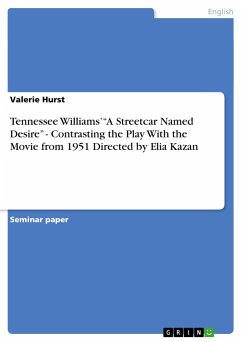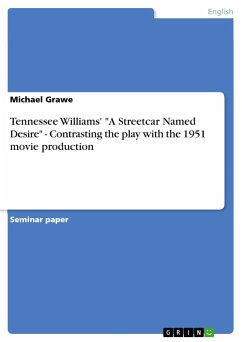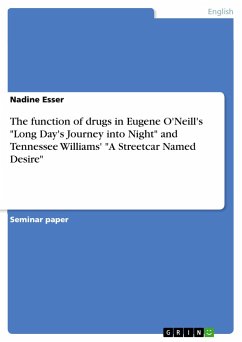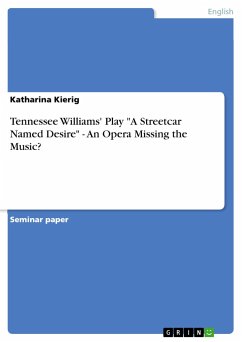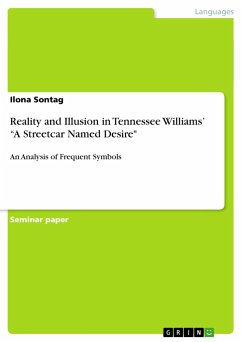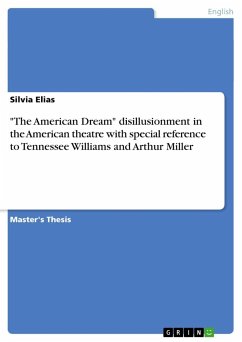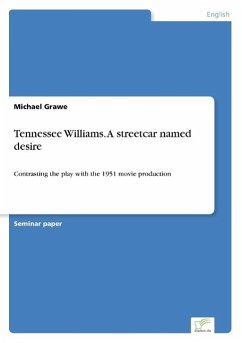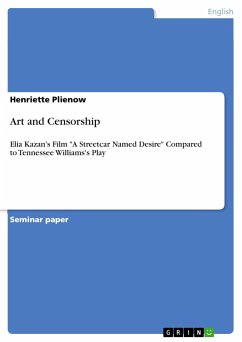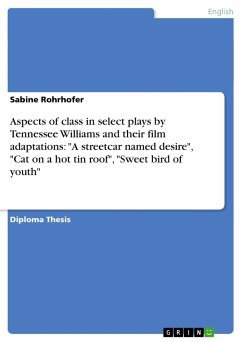
Aspects of class in select plays by Tennessee Williams and their film adaptations: "A streetcar named desire", "Cat on a hot tin roof", "Sweet bird of youth"

PAYBACK Punkte
0 °P sammeln!
Diploma Thesis from the year 2002 in the subject American Studies - Literature, grade: B (2), University of Vienna (Institute for Anglistics/American Studies), language: English, abstract: Tennessee Williams is one of America's greatest playwrights whose talents of creating tension and atmosphere went beyond the métier of theatre and were convincing in the field of motion pictures, too. Elia Kazan, the successful theatre and film director, particularly admired the artist's gift of evoking emotions.In this thesis, however, I shall not attempt at evaluating Williams's total works. Rather, my ob...
Diploma Thesis from the year 2002 in the subject American Studies - Literature, grade: B (2), University of Vienna (Institute for Anglistics/American Studies), language: English, abstract: Tennessee Williams is one of America's greatest playwrights whose talents of creating tension and atmosphere went beyond the métier of theatre and were convincing in the field of motion pictures, too. Elia Kazan, the successful theatre and film director, particularly admired the artist's gift of evoking emotions.In this thesis, however, I shall not attempt at evaluating Williams's total works. Rather, my object is a comparative analysis of select plays by Tennessee Williams and of their film adaptations: A Streetcar Named Desire (1947, 1951), Cat on a Hot Tin Roof (1955, 1958), and Sweet Bird of Youth (1959, 1962). Special attention has been given to examining the social differences in the plays and films. By focussing on the methods of characterisation employed I shall investigate more or less typical class representations in the two different media. I shall work out the social politics of the playwright, theatre and film directors, and - as far as possible - the actors' and actresses' contributions to the dramatic contents. The multitude of interpretations and variations usually gives proof to the value of artistic works. The methods applied in this thesis are literary research and film studies. As a matter of course, I analysed the plays on their written basis, which raises the general question to what extent the perceptions by the audience and the reader differ. 'The readers of a play must use their imagination to flesh out the characters, and to place them in an appropriate setting' (Sambrook, 6). Williams gives very precise and evocative stage directions, which help the reader to imagine the situations in many details. Meaning is often conveyed by poetic images. By employing figurative language he tries to 'paint a word picture or convey in words the quality of a sound' (Sambrook, 48). The critic also notes that in Streetcar, these stage directions contrast and 'serve to underline the uneducated speech' (Sambrook, 14) of most characters, except for the DuBois sisters. The audience of a play or film, on the other hand, cannot perceive these aspects; rather, the spectators are confronted with a particular setting and with concrete actors and actresses. ...




